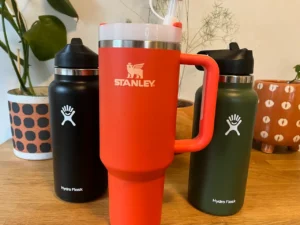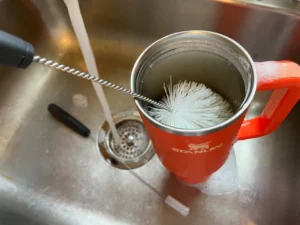One of the main reasons Stanley cups are so popular is because of their awesome insulation.
They can keep drinks hot for up to 7 hours, cold for up to 11, and ice for up to a full 2 days — really solid for a tumbler.
But while Stanley cups are usually pretty dependable, every now and then they suddenly stop keeping drinks hot or cold as long as they used to.
But why exactly does that happen?
When your Stanley cup stops working and won’t keep drinks hot or cold anymore, it’s usually because the vacuum-insulation has been compromised, allowing conductive heat to transfer into and out of your bottle with little resistance.
If your Stanley cup’s vacuum insulation still seems to be intact, it could be because you’re not using enough ice, not starting with a hot or cold enough beverage, leaving your Stanley in direct sunlight, not sealing the lid tightly, or are just drinking really fast.
If you think your Stanley cup’s vacuum-insulation has been compromised, Stanley offers a limited lifetime warranty on all of their tumblers — meaning that any loss of insulation that isn’t caused by damage or improper use is fully covered.
Commuting, studio workouts, day trips or your front porch—you’ll want this tumbler by your side. Thanks to Stanley’s vacuum insulation, your water will stay ice-cold, hour after hour. The advanced FlowState™ lid features a rotating cover with three positions: a straw opening designed to resist splashes while holding the reusable straw in place, a drink opening, and a full-cover top. The ergonomic handle includes comfort-grip inserts for easy carrying, and the narrow base fits just about any car cup holder.
1. Your Stanley Cup’s Vacuum-Insulation Is Compromised (Most Common Reason)
By far the most common reason Stanley cups stop keeping drinks hot or cold is because the tumbler has lost its insulation.
Stanley Quencher H2.0 Flowstate Tumblers use a dual-wall, vacuum-insulated seal to prevent conductive heat transfer. Because there’s no air between the dual-walls, there are no molecules present to allow heat to move through your cup.
But when that vacuum seal is broken (usually due to defects, drops, or extreme heat), the walls of your Stanley fill with air molecules, which then allow conductive heat transfer into and out of your tumbler.
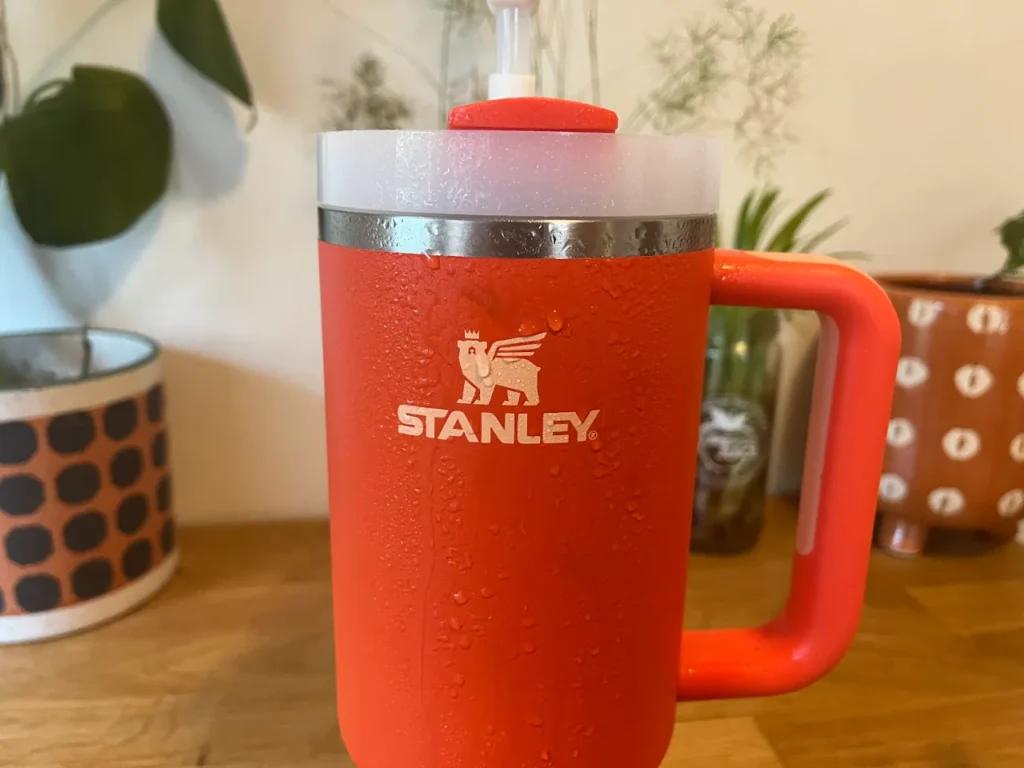
If you suspect that your Stanley cup’s insulation has been compromised, there are a couple of ways you can test it:
- Fill the cup with ice cold water. If condensation occurs on the outside of your Stanley, it’s likely that the vacuum-seal has been broken.
- Fill the cup with boiling hot water and wait a few minutes. If the outside of the bottle remains cool, your vacuum-seal is likely still intact. If it heats up, your seal is compromised.
If your vacuum-seal is broken and you haven’t dropped your bottle or exposed it to extreme temperatures, it should be covered under Stanley’s lifetime warranty.
If you suspect that damage or improper use was the cause, there’s unfortunately no way to repair it. You’ll just need to buy a replacement.
2. You’re Not Using Enough Ice
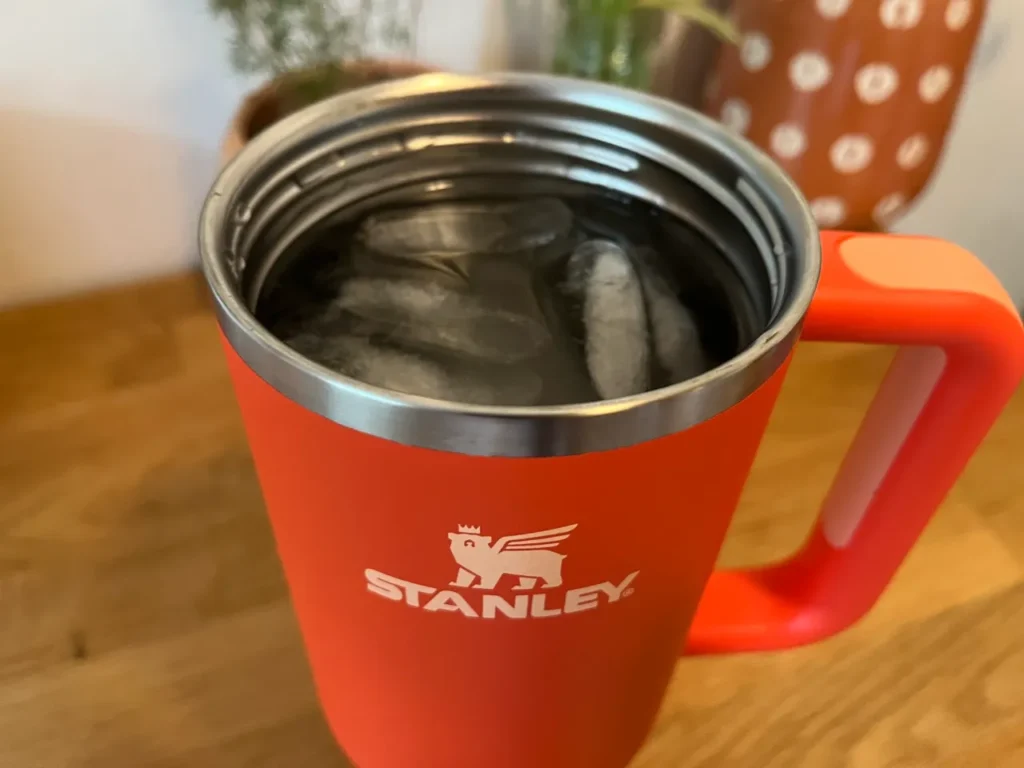
If your vacuum seal is intact and your Stanley still isn’t keeping your drinks hot or cold, it may be the way that you’re using your Stanley cup causing the issue.
If you find that your ice is melting away and your drinks are warming up after only a couple of hours, it could be because you’re simply not adding enough ice.
A few cubes in your giant Stanley isn’t going to do all that much.
To maximize ice retention, fill your cup at least ½ full of ice. And if you’re only drinking water and melted ice watering down your drink isn’t a concern, aim for somewhere closer to ¾ full.
3. You’re Not Starting With Cold (or Hot) Enough Drinks
The colder (or hotter) your drink starts, the longer your Stanley cup will be able to maintain its temperature.
While just adding more ice is the most common way to start with colder water, there are a couple of other tricks that also help quite a bit:
- Pre-chill your Stanley cup in the fridge (or empty in the freezer) so the walls of your tumbler start off nice and cool.
- Only fill your Stanley with cold beverages. Filling with room temperature liquid (like tap water) will cause some of your ice to melt away quickly.
I find that if I fill my Stanley cup full of ice and then fill it up with water from the fridge then my water stay ice cold all day long and I also usually get at least one refill out of it where the ice is still there. Some days I'll even get 2 refills and there will still be some ice left over.
If you’re trying to keep your coffee or tea hot for longer, start off with the hottest liquid you can tolerate. Or, if you don’t plan on drinking right away, use near-boiling water instead.
4. You’re Leaving It In The Sun

If you let your Stanley sit in direct sunlight, thermal radiation from the sun’s rays will slowly heat whatever’s inside.
Whenever possible, keep your Stanley cup in a nice cool area — ideally in an indoor air conditioned space but, at the very least, somewhere in the shade and out of the sun.
It’s especially important if you have a dark colored Stanley, which will absorb more heat from the sun than lighter colors.
5. You’re Not Sealing The Lid
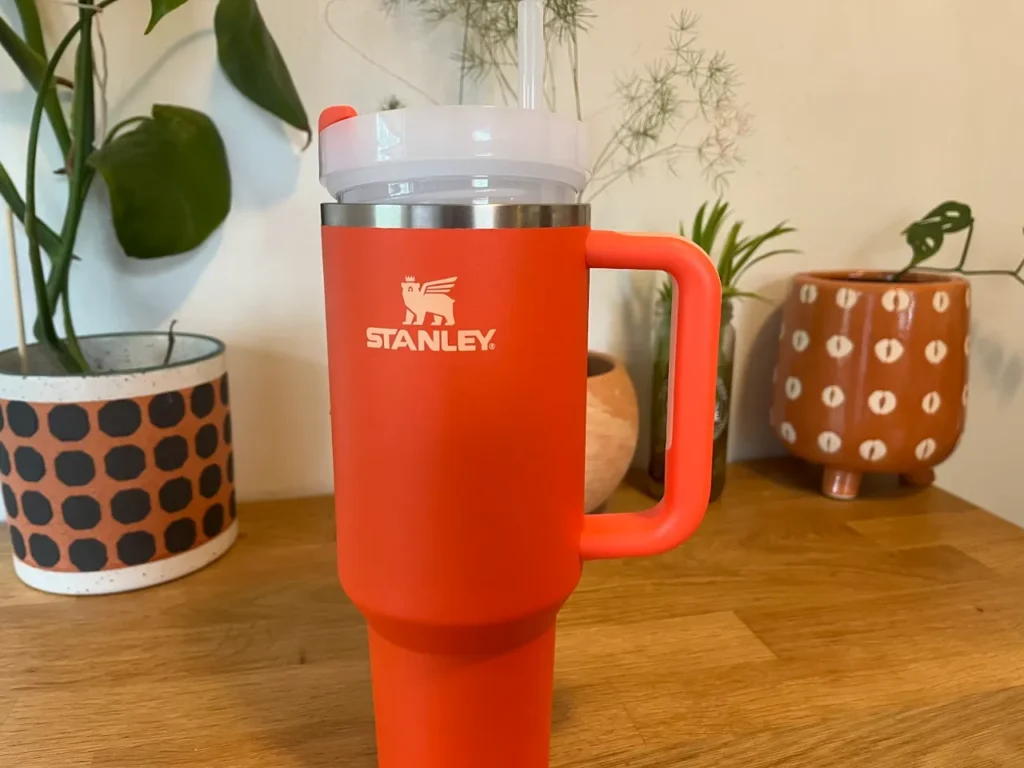
While it’s true that the walls of your Stanley cup provide a majority of your tumbler’s insulation, the lid still plays a pretty important role as well — particularly at preventing convection.
If you’re leaving the lid off, leaving it partially open, or leaving the drinking slit open between sips, cold air is going to escape and warm air is going to enter at a much faster rate — decreasing your Stanley cup’s ice retention (or heat retention) much faster than you’d expect.
6. You’re Drinking Really Fast
And lastly, if you’re a fast drinker, keep in mind that a Stanley cup full of ice cold water is going to keep cold for a lot longer than one that’s only half full.
The more cold thermal mass inside your tumbler, the slower things will heat up.



